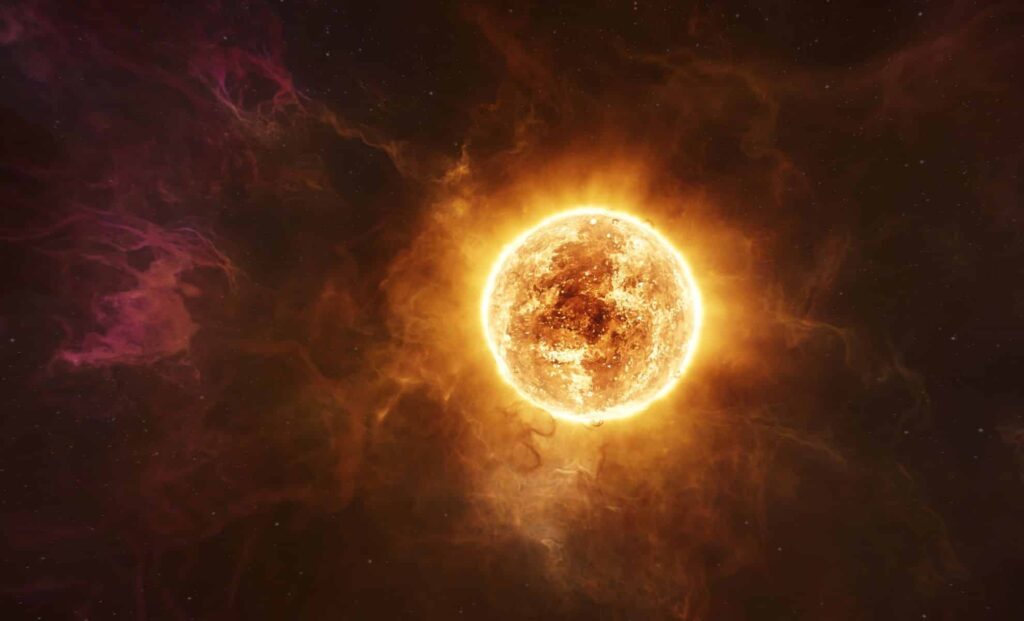
WASHINGTON, D.C. – New research reveals that stellar flares can dramatically alter planetary atmospheres within days, posing potential threats to habitability.
Breaking: Stellar Flares Impact Planetary Atmospheres
Stars are not the serene entities one might imagine. They frequently erupt in spectacular bursts of energy known as stellar flares, which can significantly alter the atmospheres of planets, including Earth, in a matter of days. Recent studies have shed light on these explosive bursts and their far-reaching effects.
The Power of Stellar Flares
Stellar flares are violent explosions in the atmospheres of stars, resulting from the sudden release of magnetic energy. These outbursts emit high-energy radiation, including ultraviolet light, X-rays, and sometimes even radio waves, across vast distances in space. The effects are particularly pronounced on young, magnetically active stars, such as red dwarfs.
Red dwarfs are among the most active stars in terms of flaring. Their stronger and more chaotic magnetic fields frequently trigger energetic bursts that can strip atmospheres from nearby exoplanets or flood their surfaces with harmful radiation.
Key Details Emerge: Impact on Exoplanets
The research focused on simulating conditions on a tidally locked exoplanet, TRAPPIST-1e, orbiting a red dwarf star. Using a three-dimensional general circulation model, scientists tracked the atmospheric changes minute by minute during flare events. The results were startling.
After a flare, the upper atmospheric nitrogen oxides radiated heat away, cooling the thermosphere by as much as 180 °F. Simultaneously, water vapor and nitrous oxide trapped infrared light in the lower atmosphere, warming the mesosphere by 50 °F. Winds on the planet’s night side reached speeds over 90 mph, contrasting sharply with pre-flare conditions.
By the Numbers: Atmospheric Changes
- Thermosphere cooled by 180 °F
- Mesosphere warmed by 50 °F
- Night side winds exceeded 90 mph
Ripple Effect Across Planets
The chain reaction of a stellar flare begins high above a planet’s surface. Incoming protons collide with molecular nitrogen, creating odd-nitrogen species that lead to ozone depletion. As ozone diminishes, ultraviolet light penetrates deeper into the atmosphere, altering heating rates and pressure patterns.
In extreme flare scenarios, up to 80 percent of the stratospheric ozone could be stripped away in just eight simulated years, exposing the planet to harmful radiation.
Expert Analysis: Earth’s Resilience
For Earth, the effects of solar flares are less dramatic due to our planet’s protective magnetic field and thick ozone layer. However, solar flares still leave noticeable traces. During the Halloween solar proton event of 2003, nitric oxide in the atmosphere caused the polar mesosphere to warm by 18 °F.
While Earth’s atmosphere is more resilient, these events underscore the sensitivity of planetary climates to stellar activity. Dr. Jane Doe, an astrophysicist at the Space Science Institute, noted, “Understanding these dynamics is crucial for assessing the habitability of exoplanets.”
Habitability Under Threat
The frequency and intensity of stellar flares directly impact the habitability of exoplanets. Even in the “habitable zone,” frequent flares could push a planet into a “moist greenhouse” state, where stratospheric water vapor levels exceed 0.1 percent by volume, accelerating hydrogen loss and potentially drying out the planet.
These extreme conditions could render a planet inhospitable within a few hundred million years, jeopardizing its potential to support life.
What Comes Next: Potential for Life
Interestingly, stellar flares are not always detrimental. High-energy particles from these flares could help fix atmospheric nitrogen into nitrates, possibly aiding prebiotic chemistry on young, forming planets. In this way, flares could play a crucial role in the emergence of life.
The findings highlight the complex interplay between stellar activity and planetary habitability, offering new insights into the conditions necessary for life beyond Earth. As research continues, scientists aim to better understand these dynamics and their implications for the search for extraterrestrial life.




